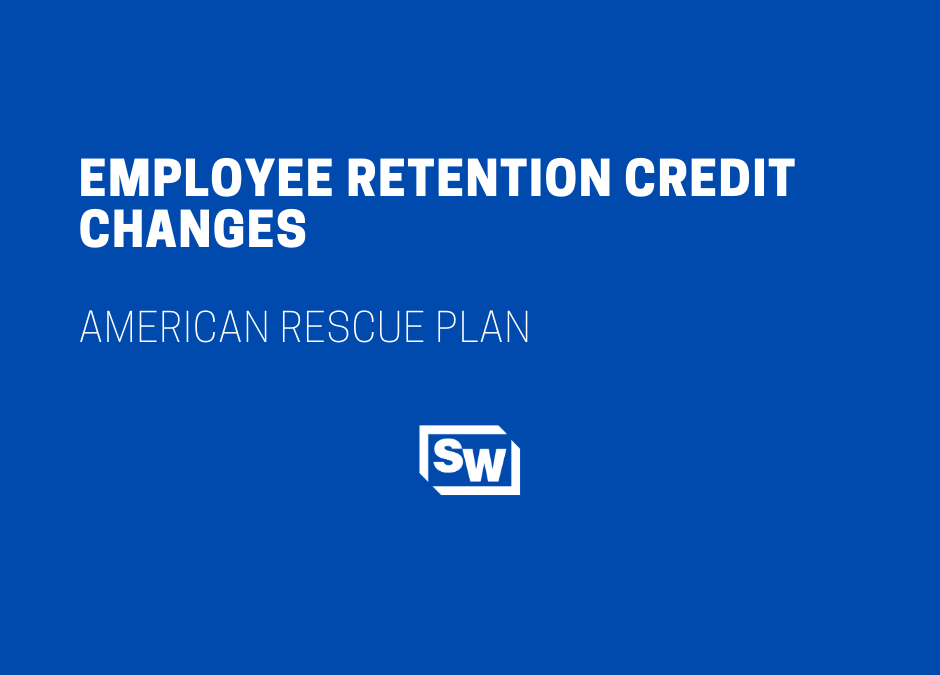- All the following changes relate to wages paid after June 30, 2021 and before January 1, 2022.
- The act codified the Employee Retention Credit and extended it through the end of 2021.
- The Employee Retention Credit is allowed against Medicare tax.
- Recovery Startup Business
- A recovery startup business means any employer which:
- Began carrying on a trade or business after February 15, 2020,
- For which the average annual gross receipts of such employer for the 3-taxable-year period ending with the taxable year which precedes the calendar quarter for which is the credit is determined does not exceed $1,000,000.
- The amount of the credit allowed for any calendar quarter shall not exceed $50,000.
- Severely financially distressed employers are defined as an eligible employer with less than 10% of gross receipts for 2021 when compared to the same period in 2019.
- For a severely financially distressed employer the term qualified wages mean wages paid by the employer with respect to an employee during any calendar quarter.
- These wages cannot include wages used in other credits, loan forgiveness calculations or grants received from the SBA that fall under code sections 41, 45A, 45P, 45S, 51, 1396, 3131 and 3132.
- Refundable amounts of the credit will be treated as an overpayment that will be refunded as part of the quarterly or applicable payroll tax filings. There is no longer an option to request an advance of the refundable portion of the credit.
- There are special rules for seasonal employers and for employers not in existence in 2019.
- The statute of limitations has been extended to 5 years after the later of:
- The date on which the original return which includes the calendar quarter with respect to which such credit is determined is filed or;
- The date on which such return is treated as filed under section 6501(b)(2)
- We are awaiting additional guidance from the IRS and will pass along the information as soon as it is issued.

